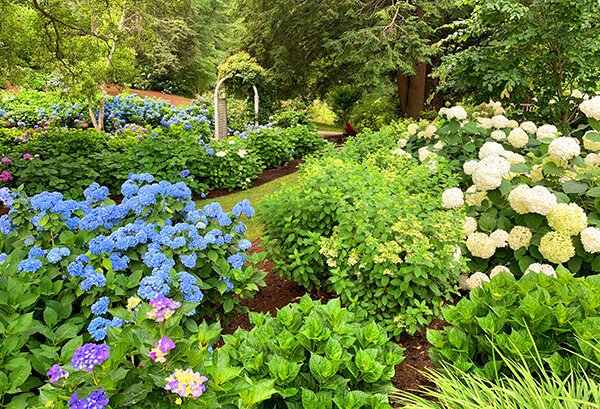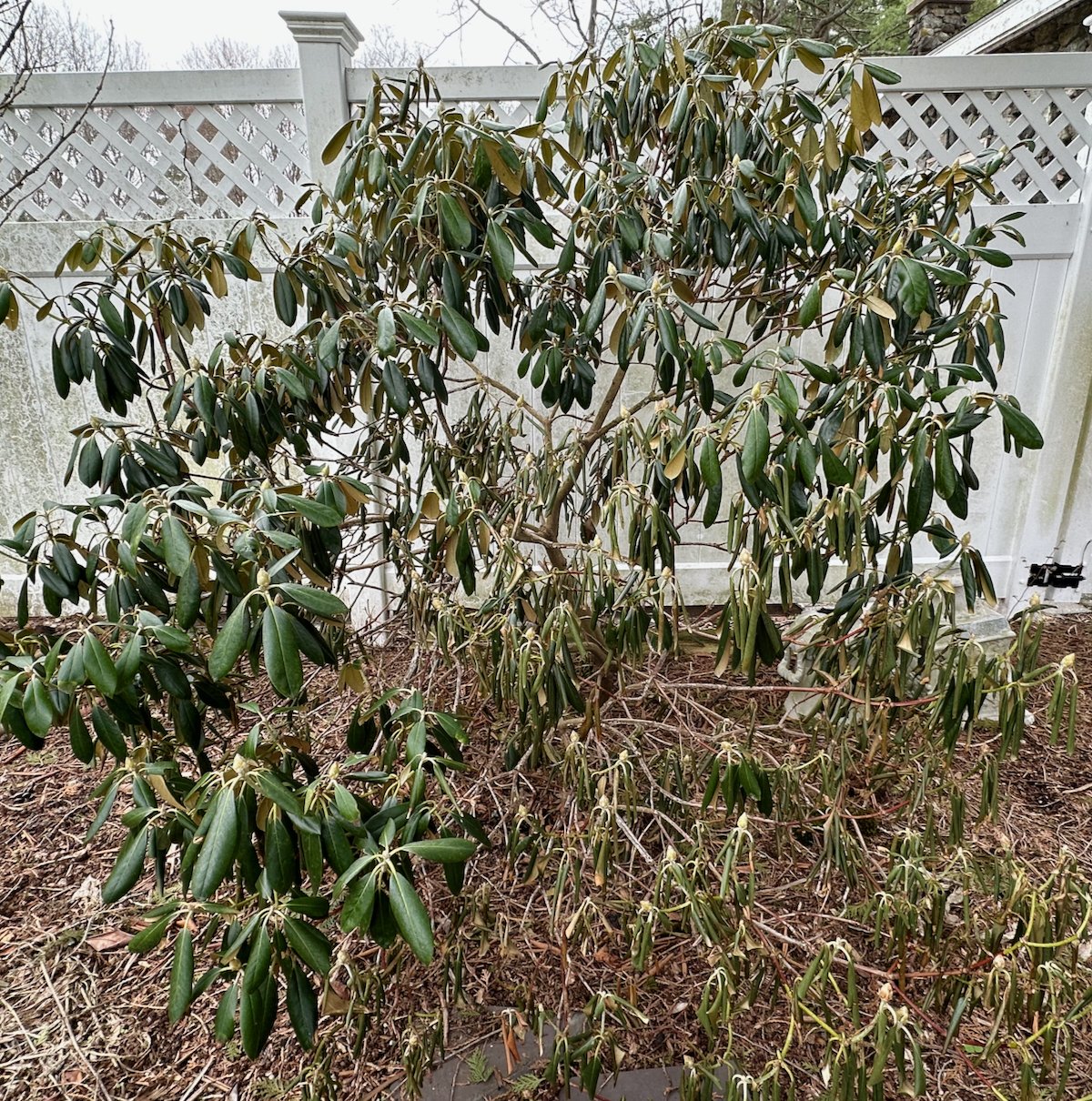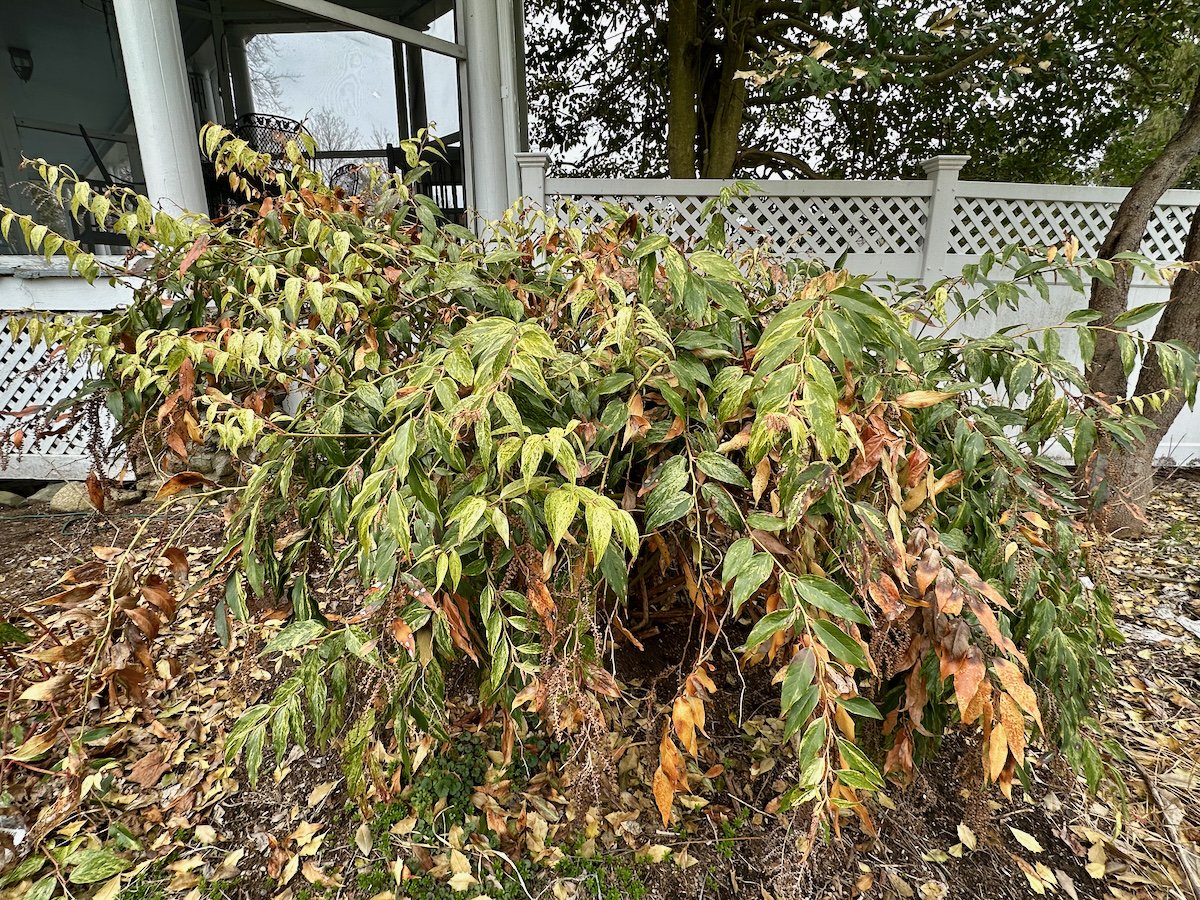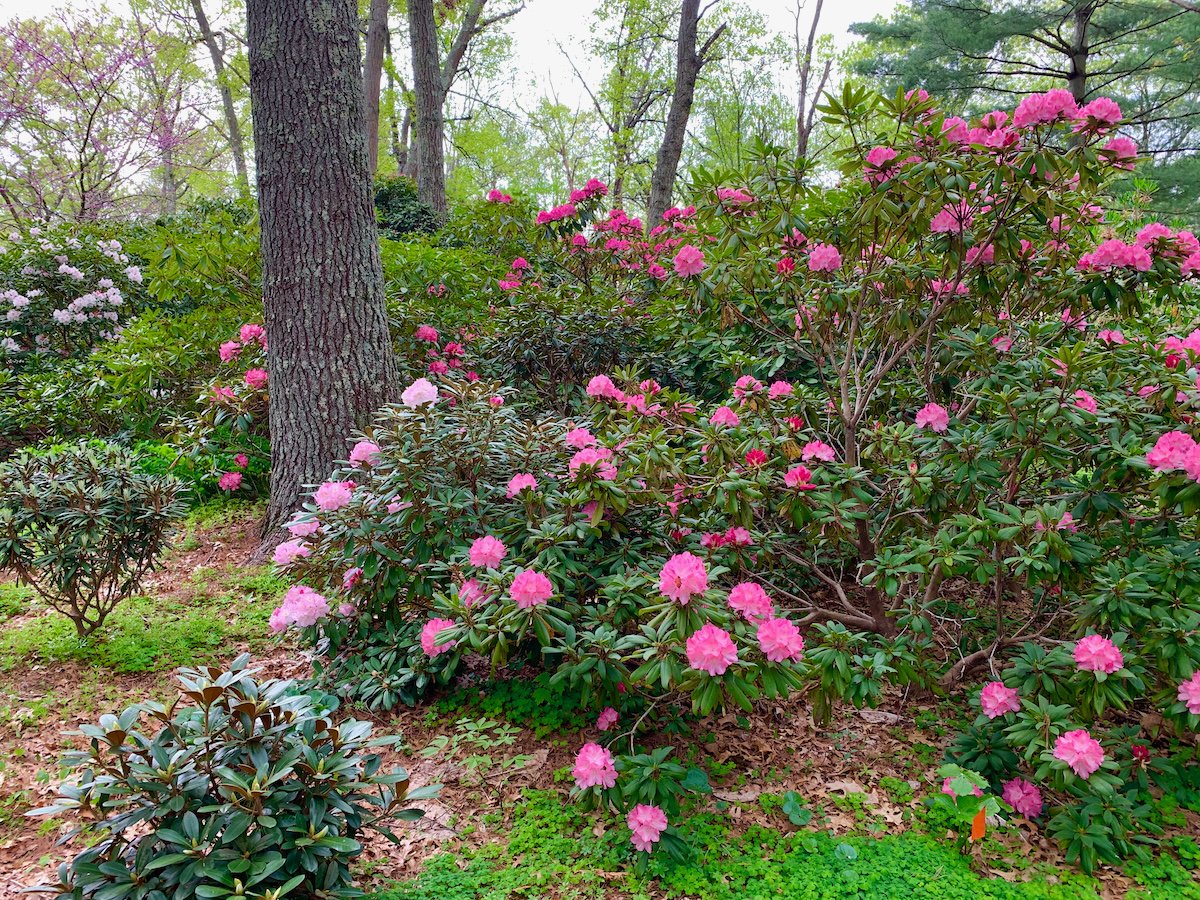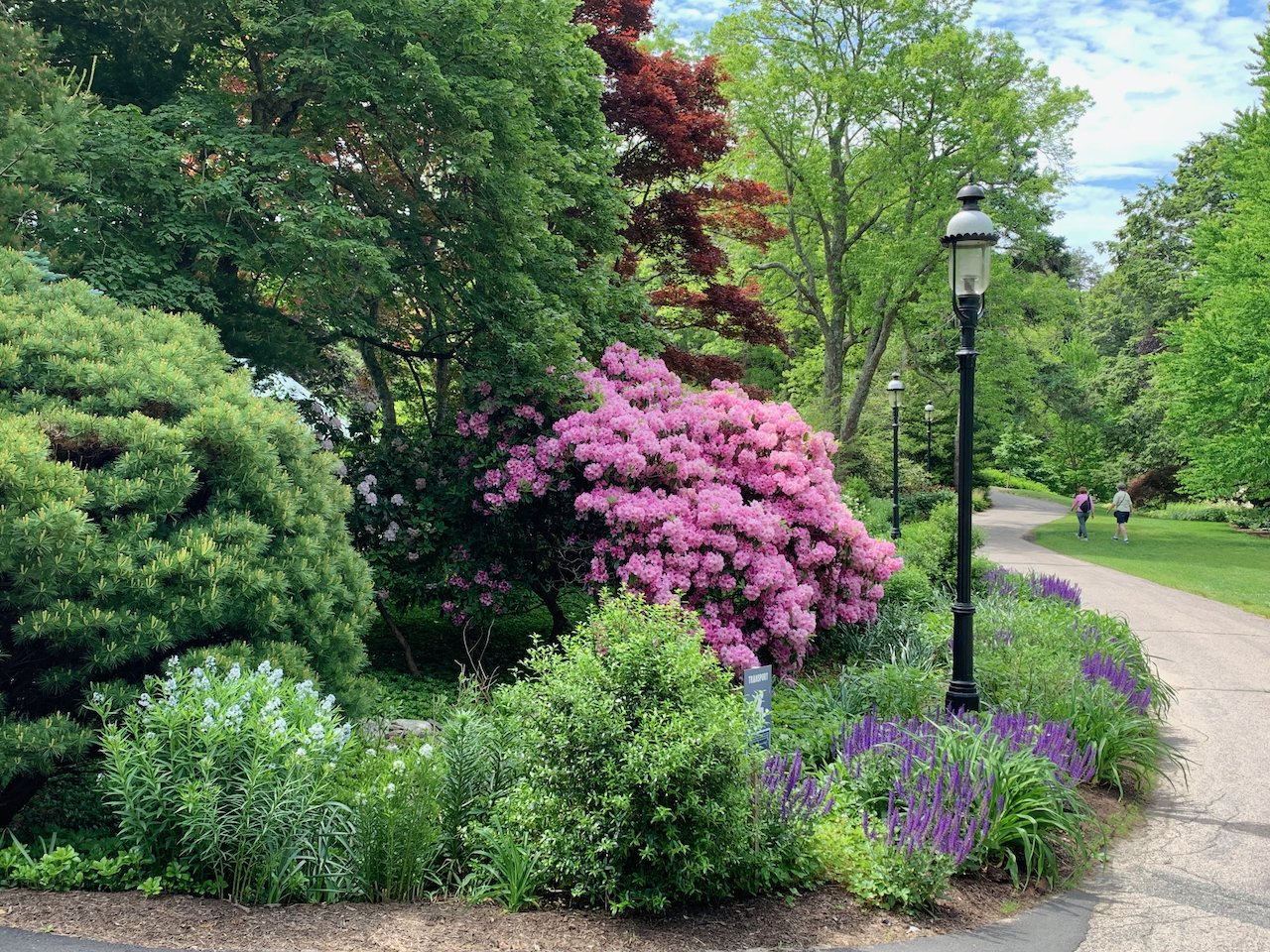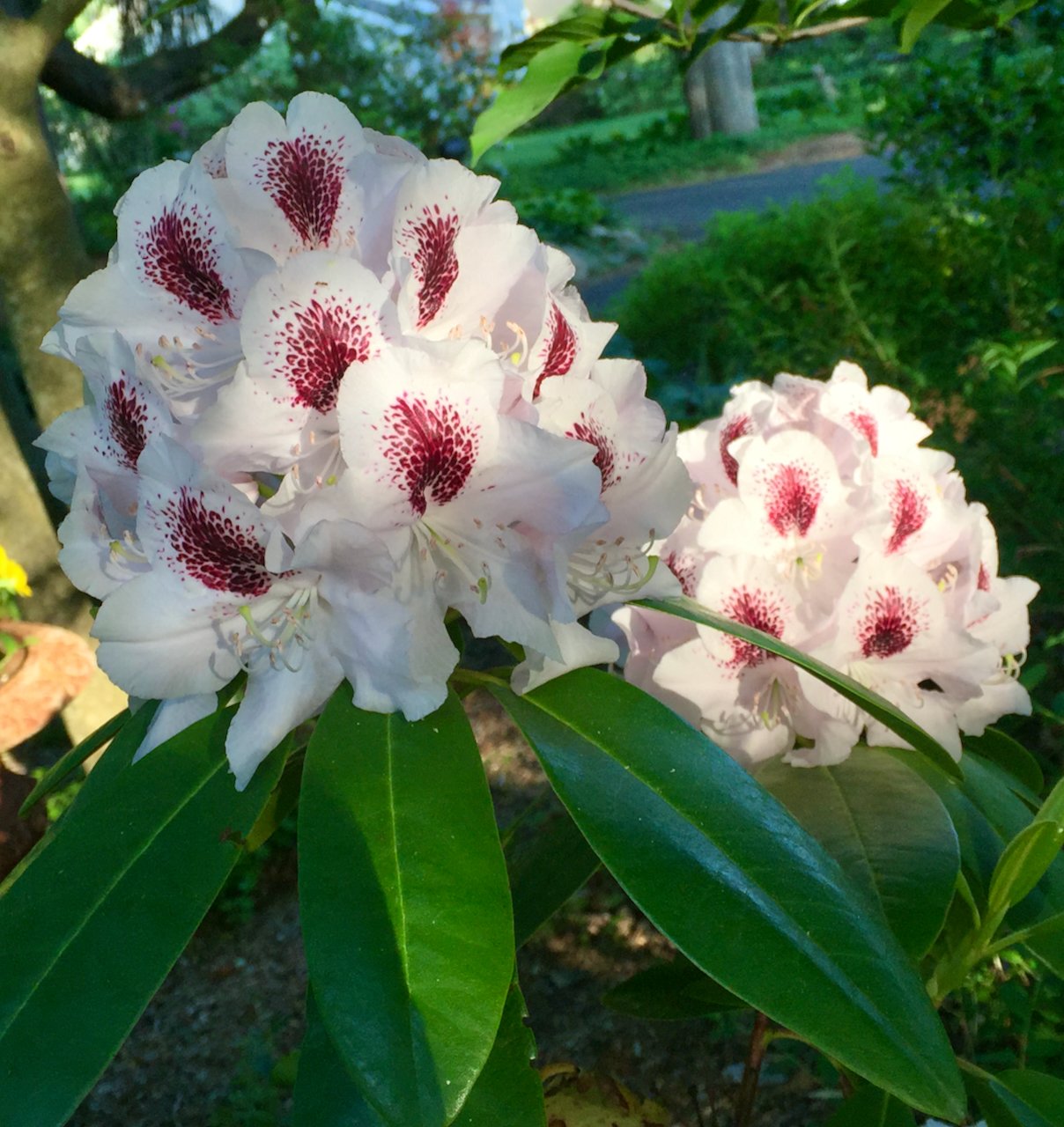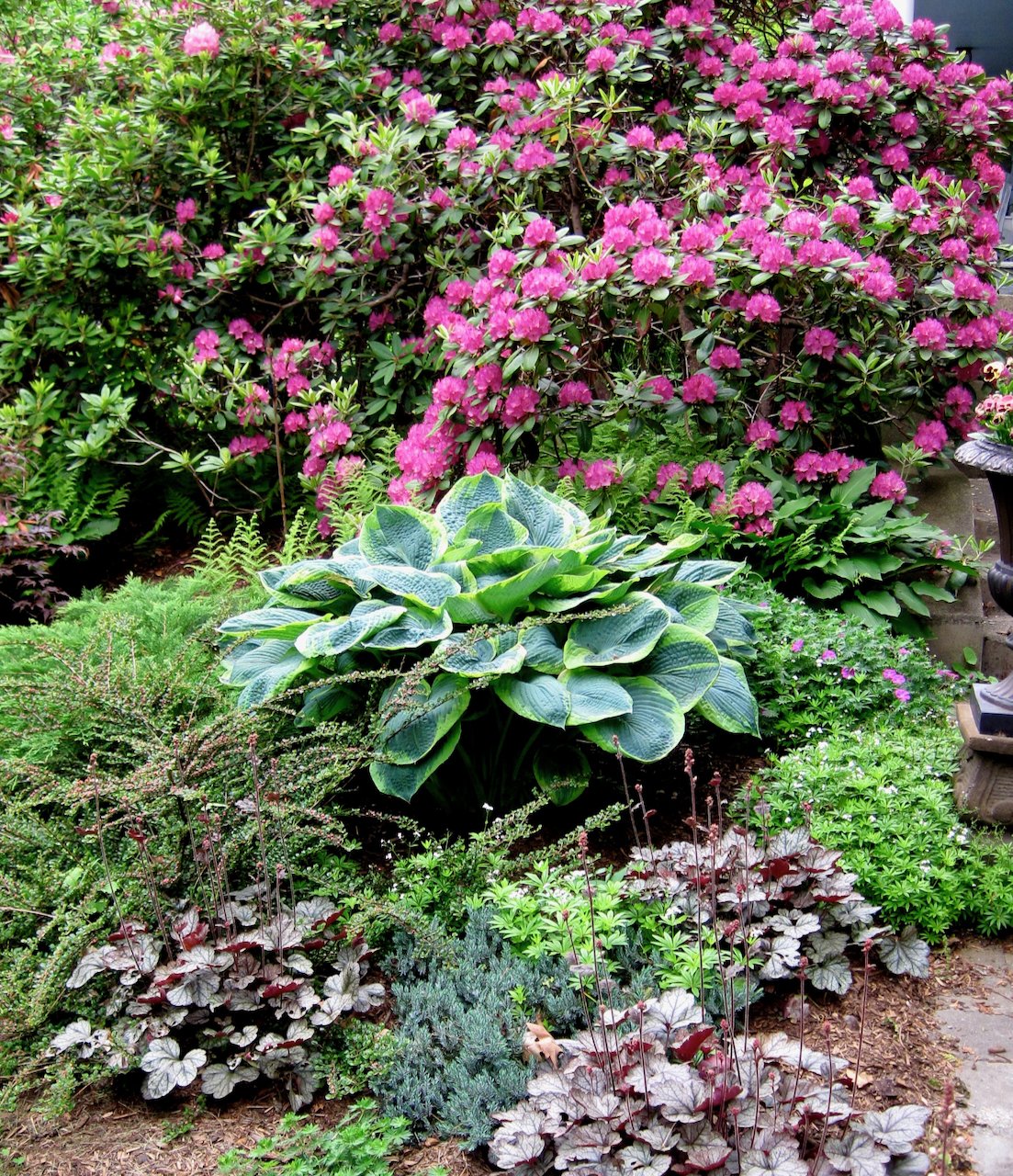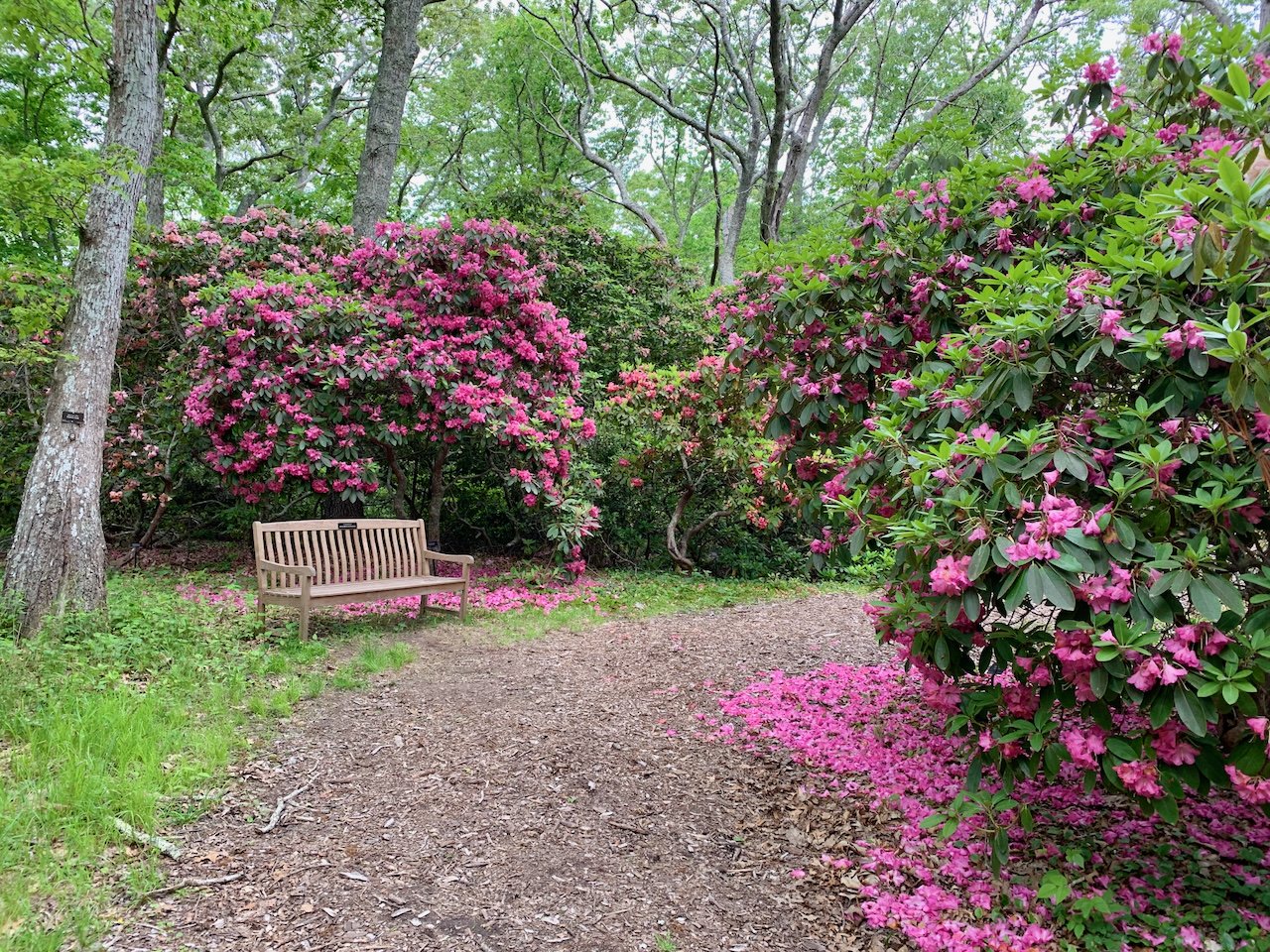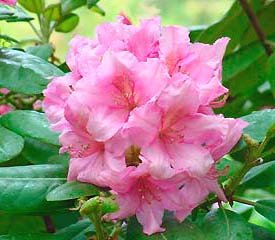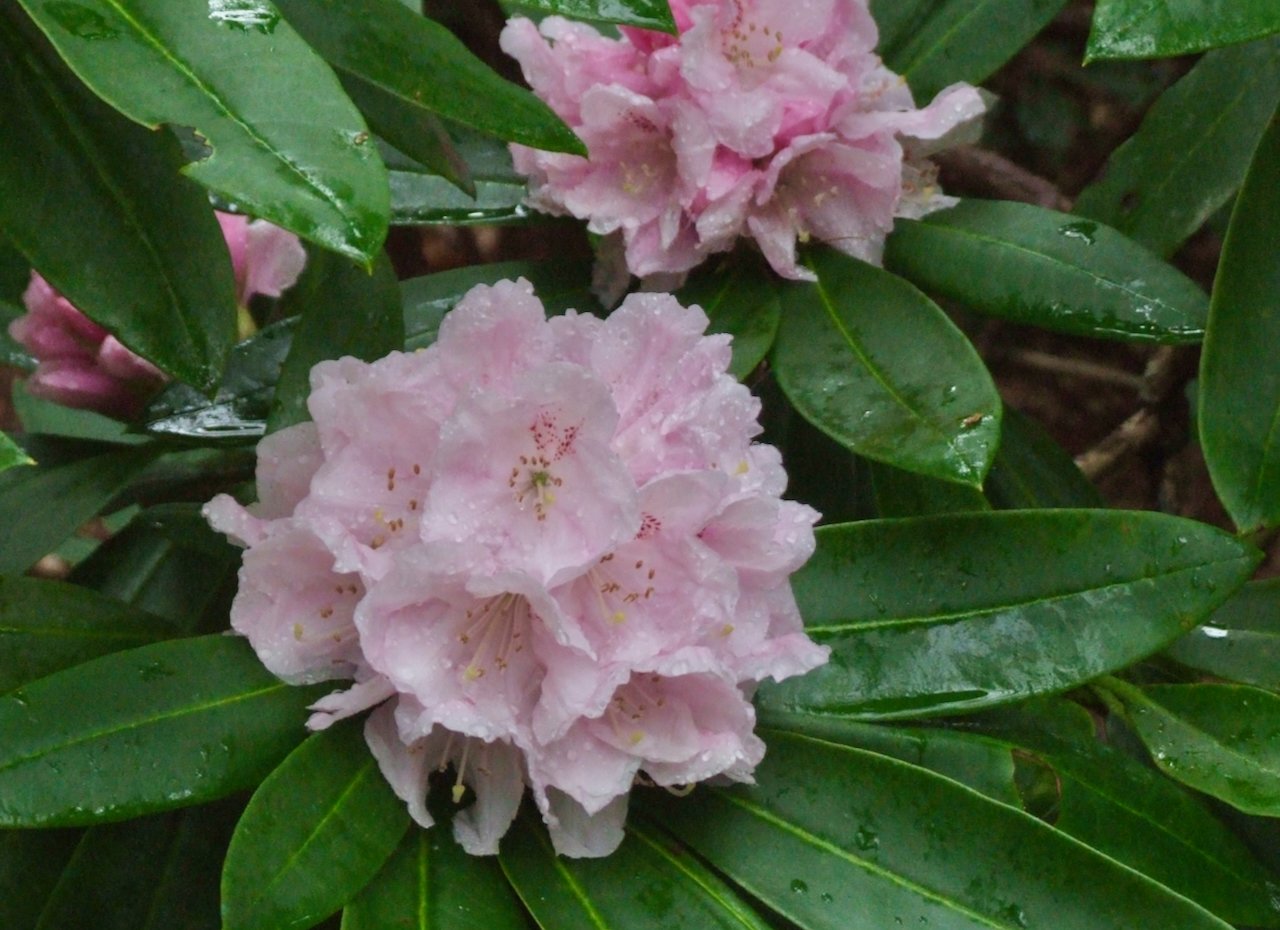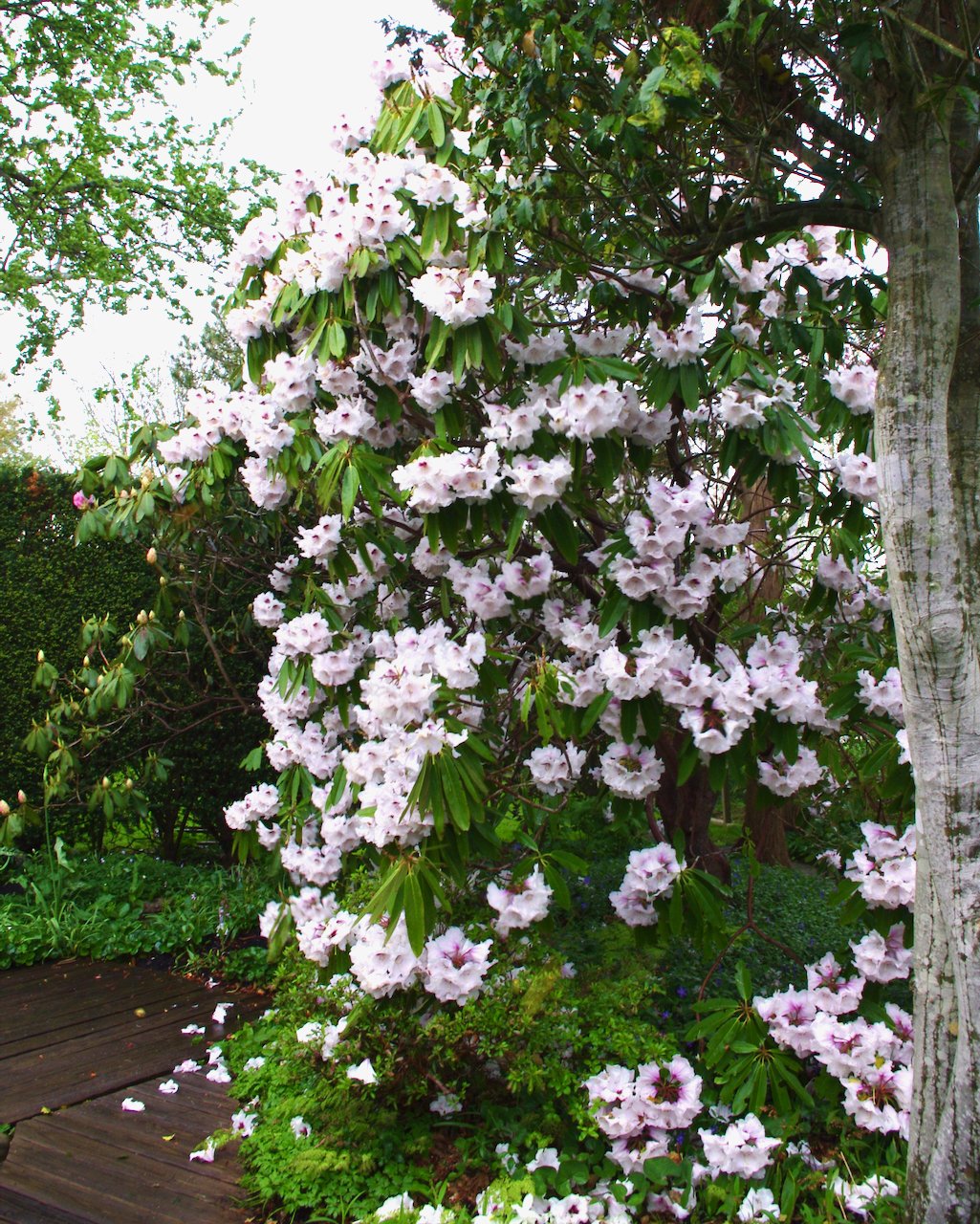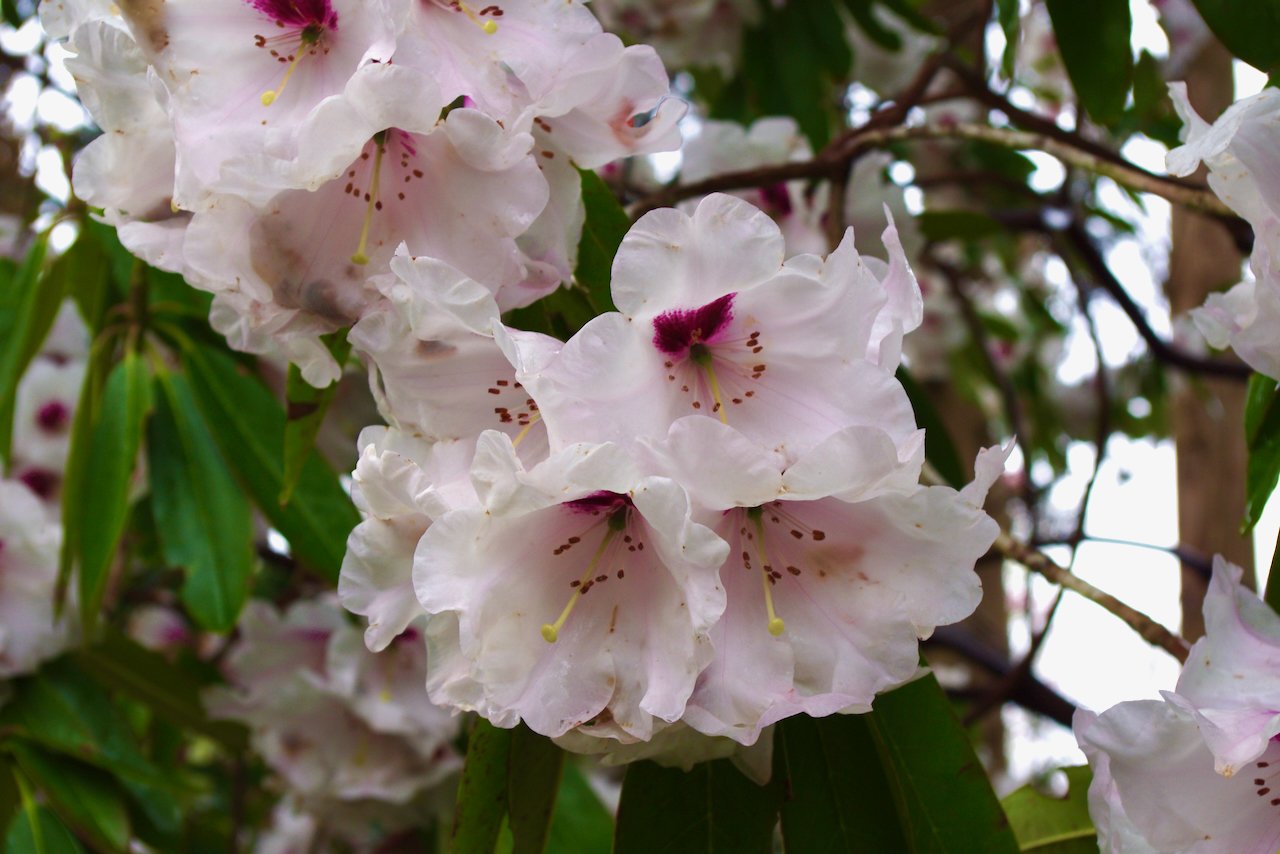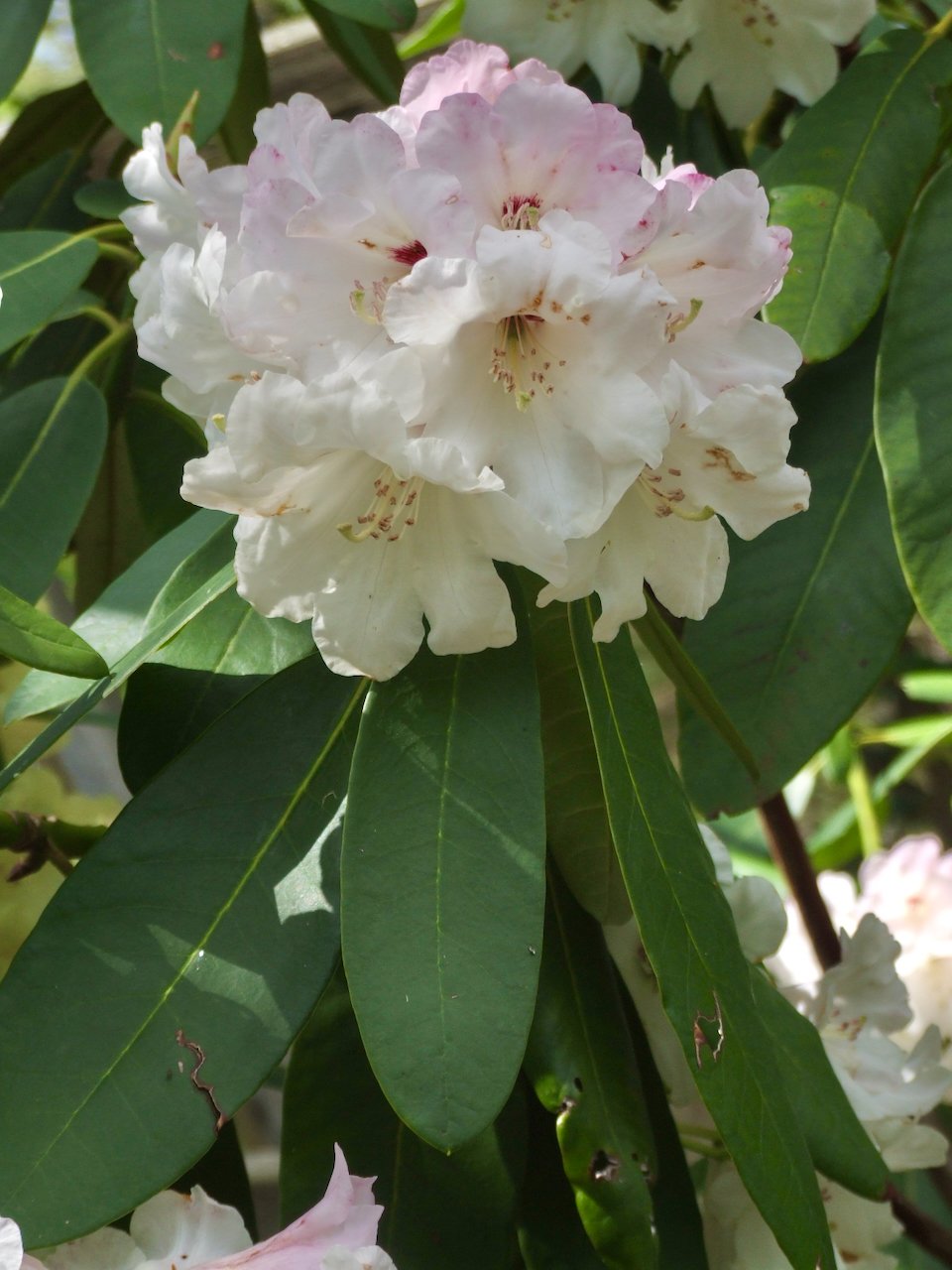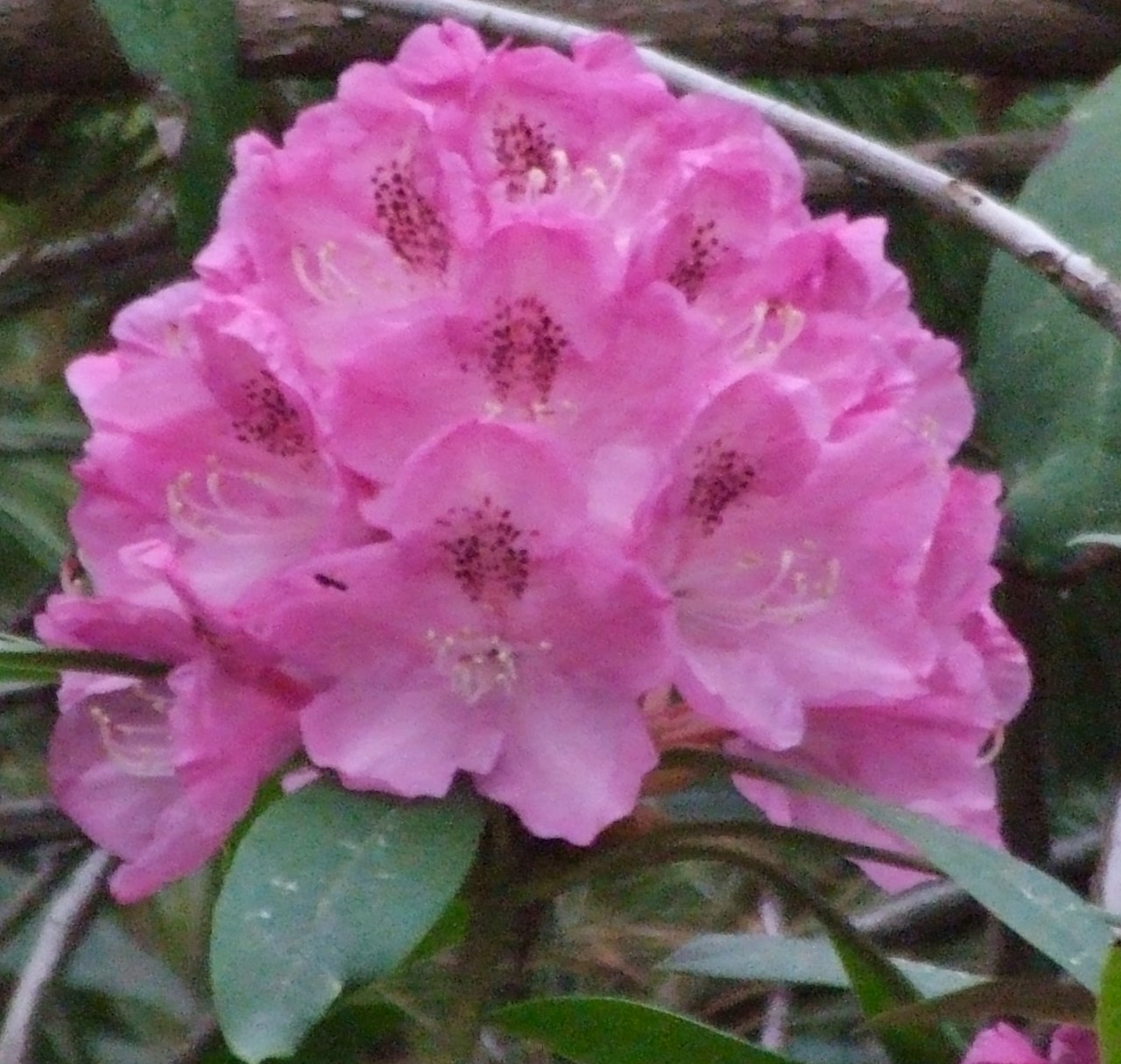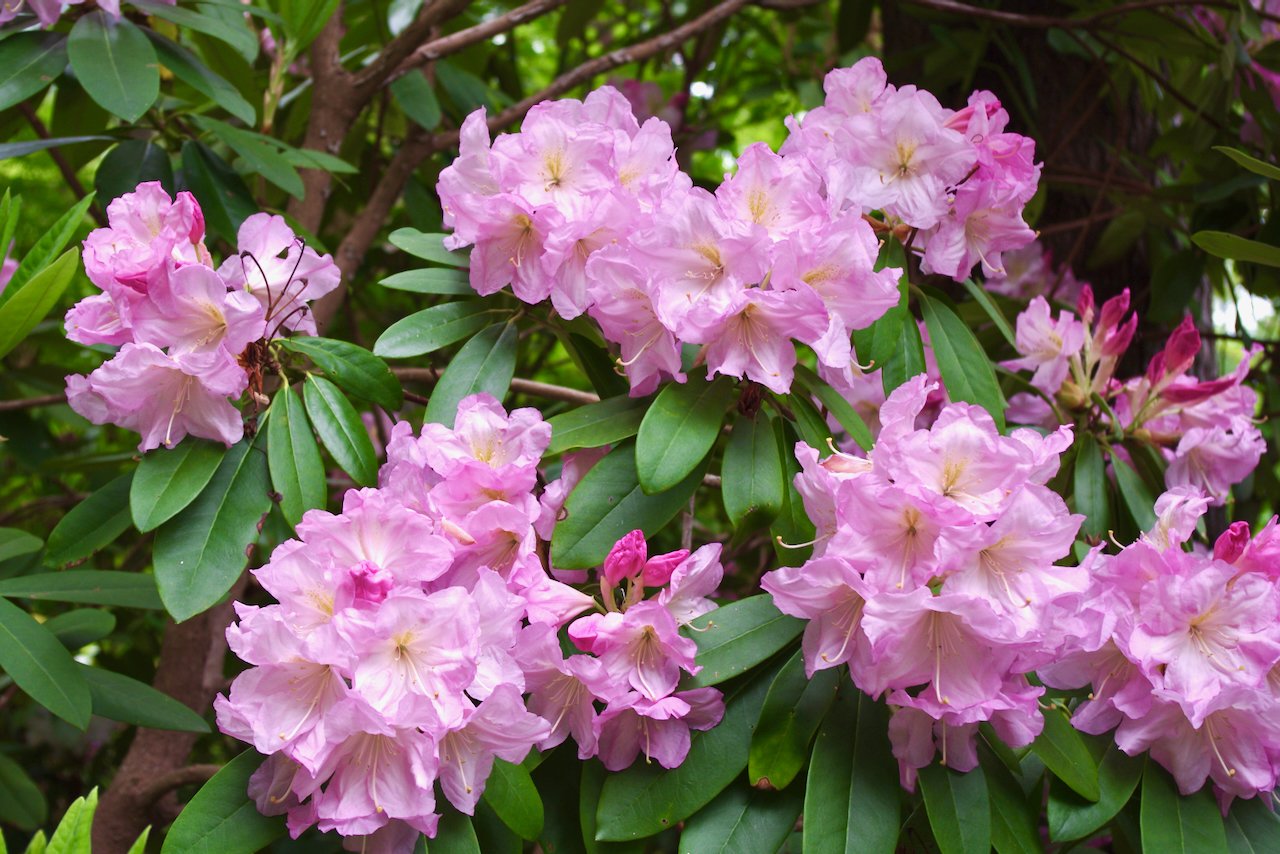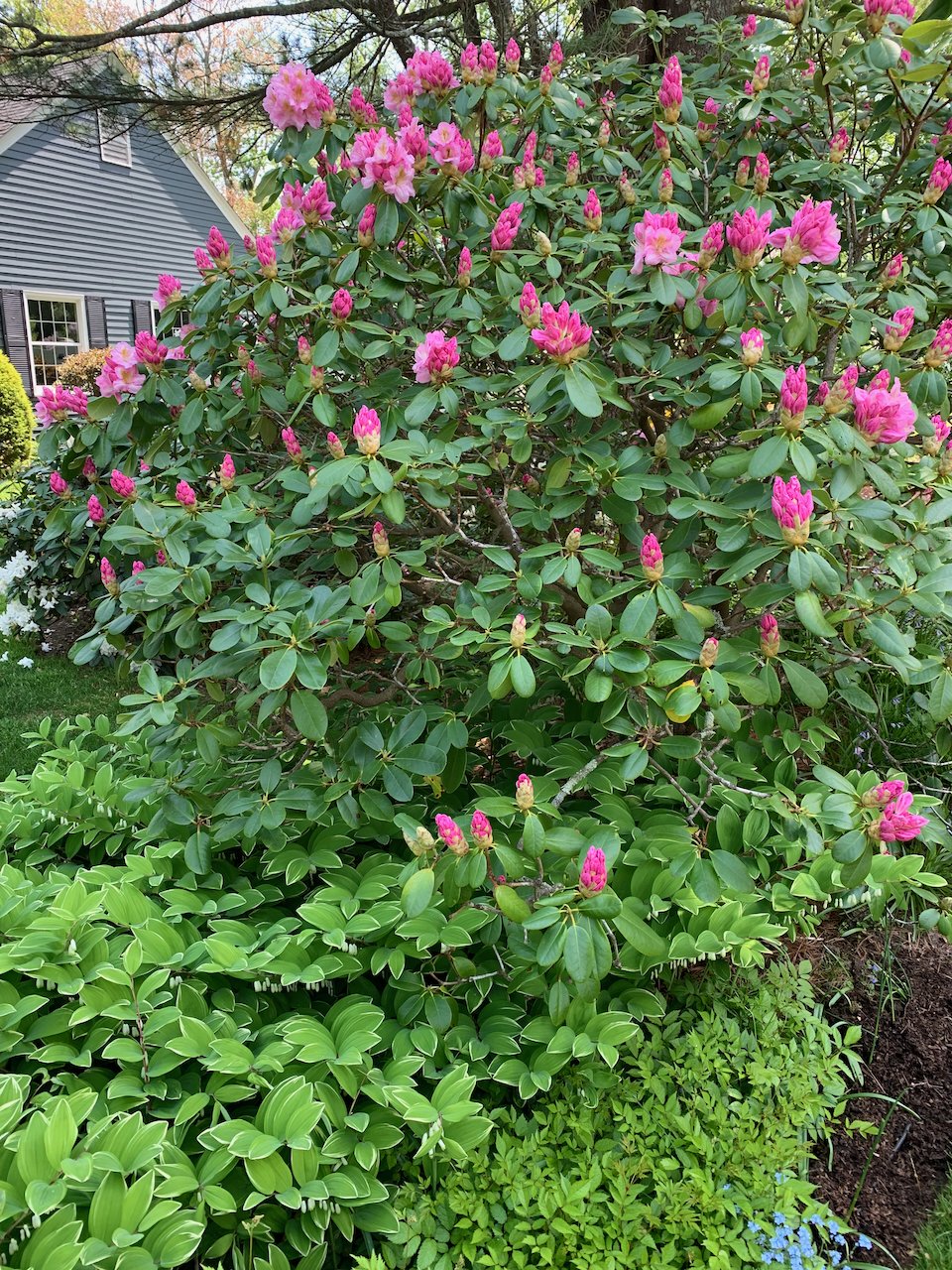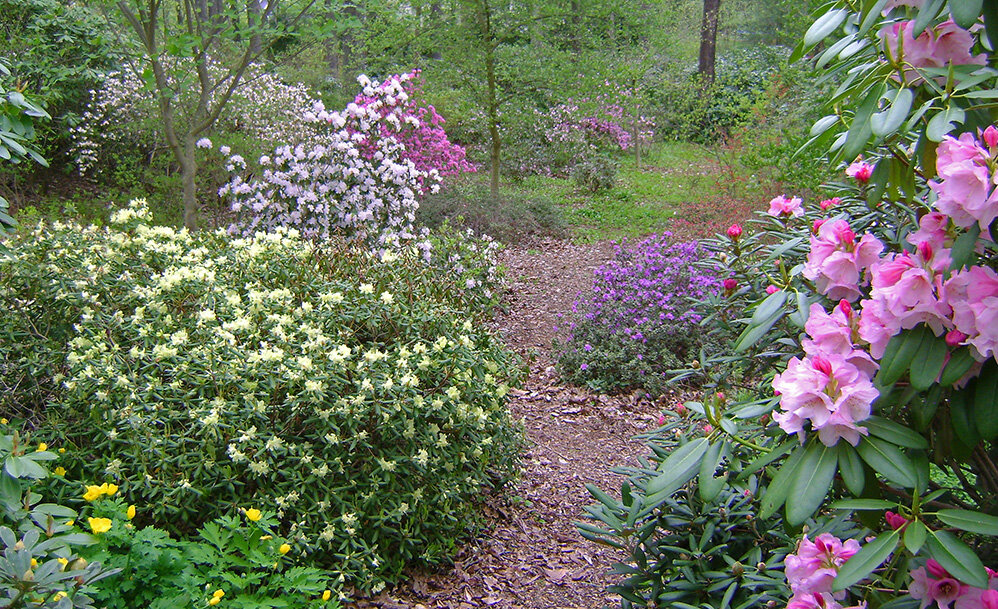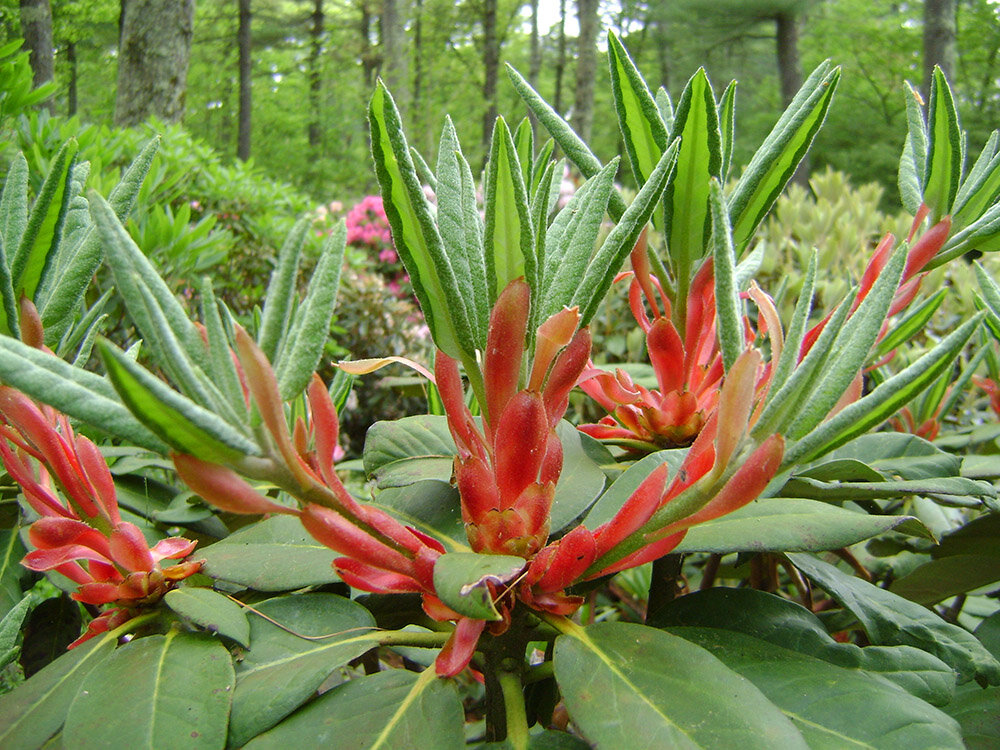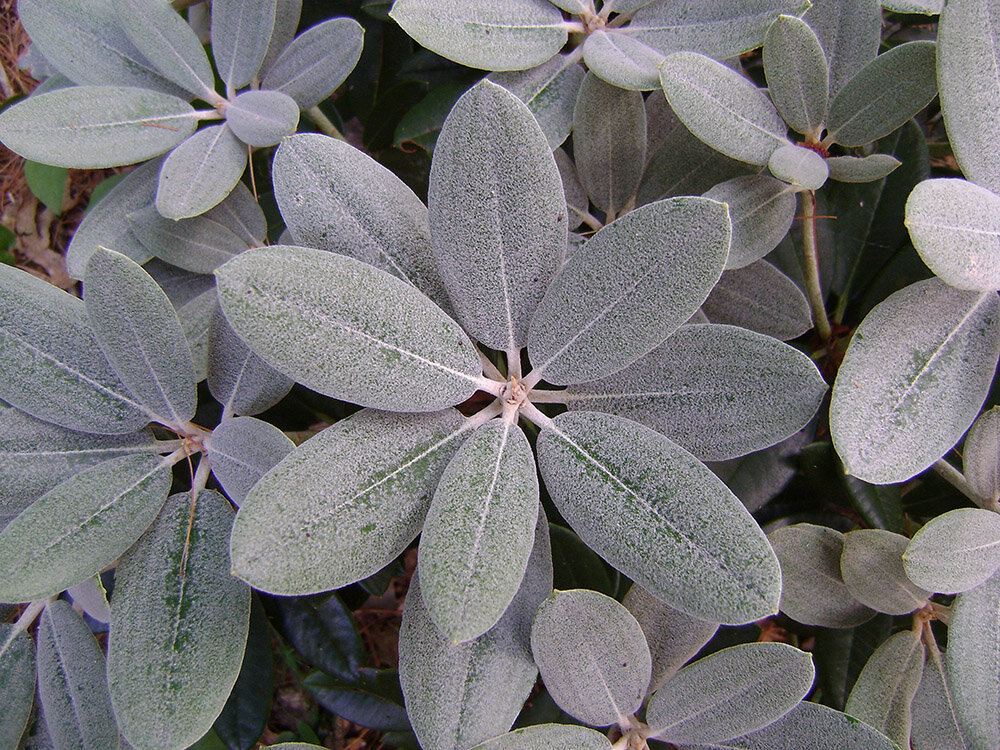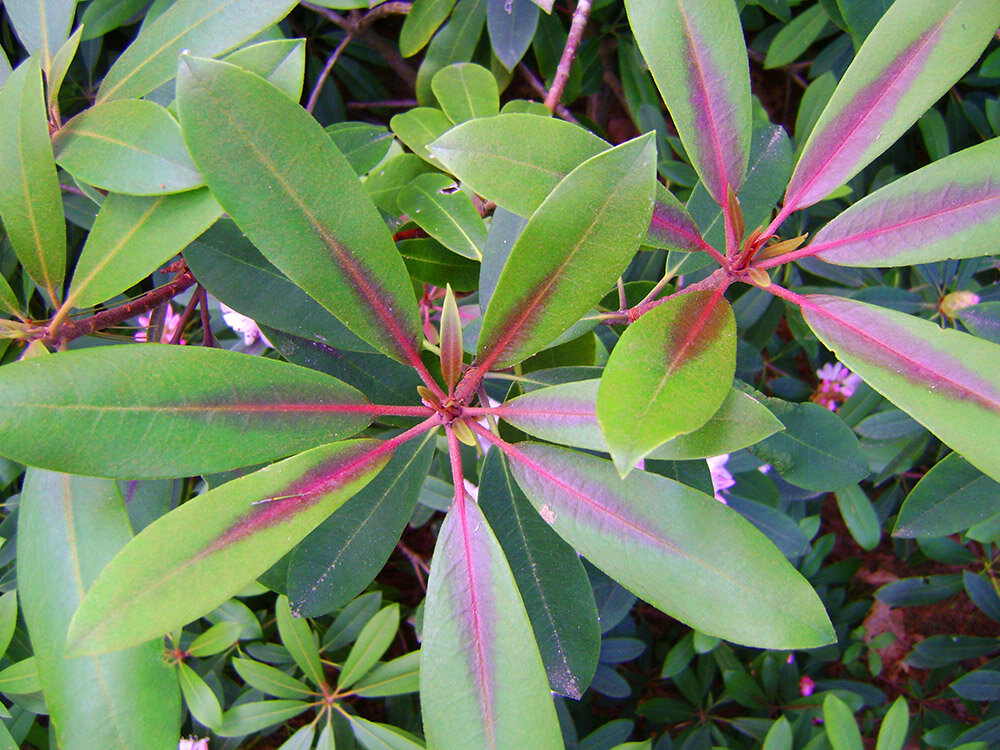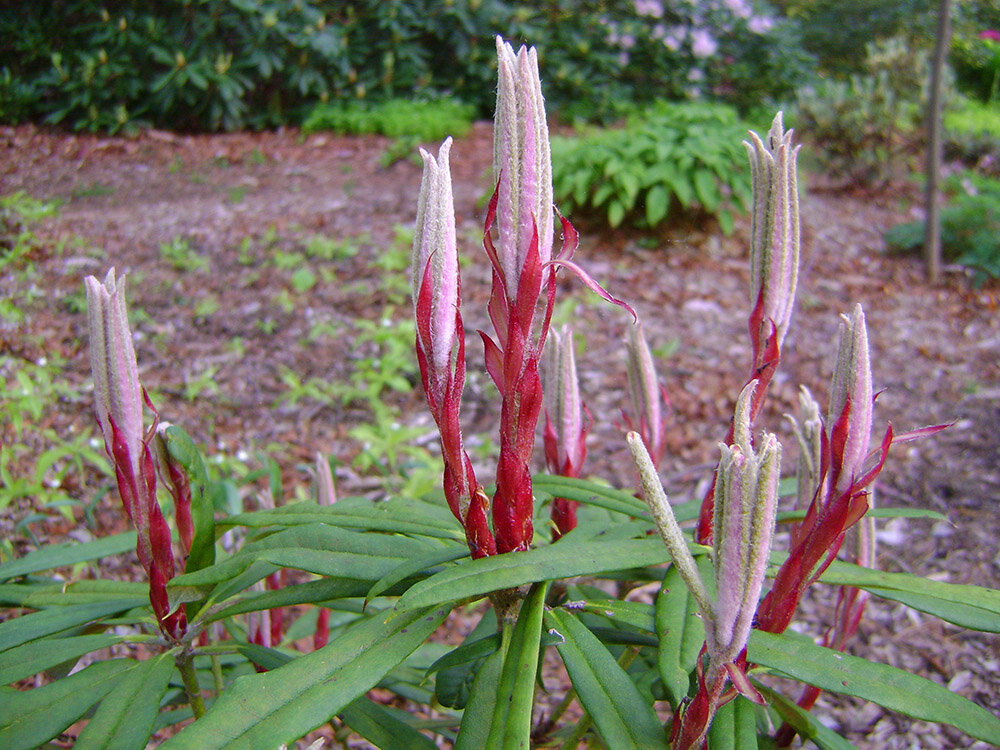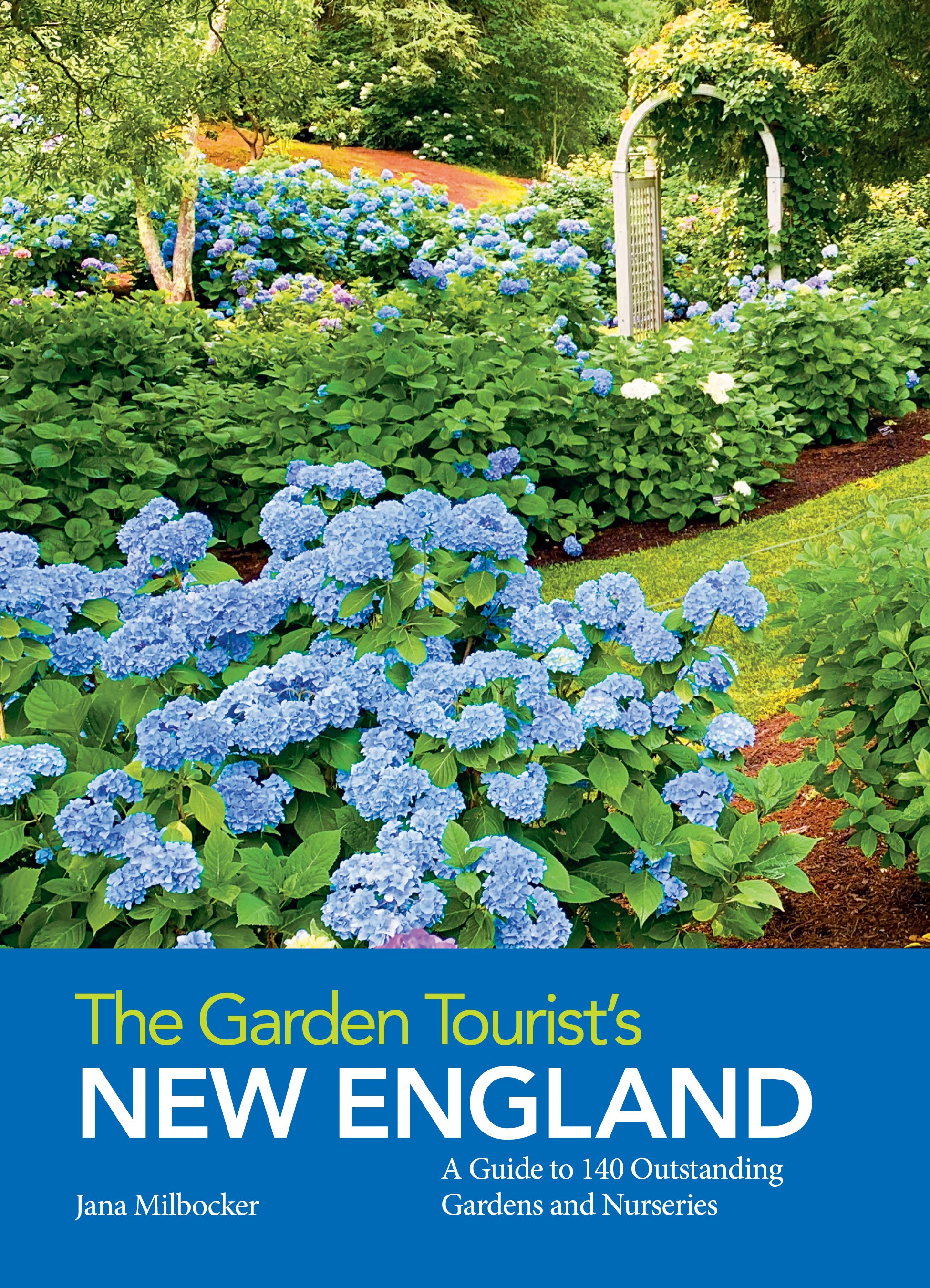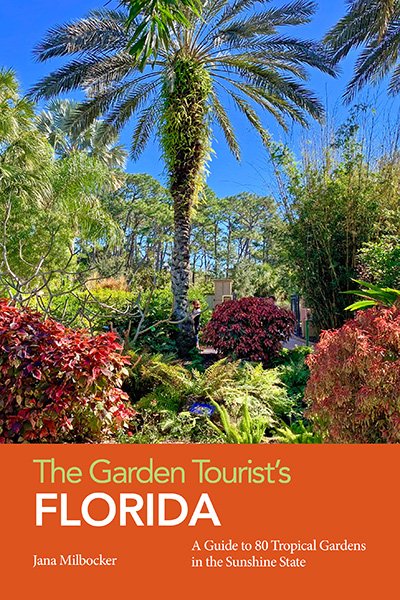Spring 2025 Rhododendron Damage in New England
/Guest Post by Jim Connolly, MCH, MCLP, Weston Nurseries Garden Center Manager, Chelmsford and Joe Bruso, President of the Massachusetts Chapter of the American Rhododendron Society and owner of Boulderwoods Nursery, Hopkinton, MA. Photos by Jana Milbocker
Jim Connolly writes:
With the snow finally melting away and warmer temperatures starting to happen I have been seeing some foliage damage to Rhododendrons specifically, however this could also happen to many broad-leaved evergreens as well. Most of the damage I see is to the top of the plant and I believe it is due for a few reasons.
Last summer and fall we had a very dry season and because of that many broad-leaved evergreens could have been stressed before the winter even started. All evergreens require having some kind of moisture in their stems to tolerate the winter conditions. With the drought occurring last year this could already put these plants in a position to fail. Why some plants are not affected versus others could be the age of the plant or the health of the soil.
During the winter it is typical to have a Rhododendron curl their leaves to help protect them from the cold winter conditions. Typically, the colder it is, the tighter the roll. You almost don’t even need a thermometer, just look out your window and if the leaves are tightly curled you know it is freezing outside. Once the weather becomes warmer the leaves unfurl and are in their typical formation and all is good.
During the growing season when a rhododendron curls their leaves it could be caused from a pathogen like phytophthora root rot or an insect like root weevils or rhododendron borer. These pests would be more likely to be active in May/June or in the summer, not in March and April when we have nighttime temperatures still in the 30s and 40s.
So why is the top of your Rhododendron showing curling leaves and the bottom leaves are fine then? I will tell you. The bottom branches were protected a few weeks ago by the snow cover we had. The tops of the plants were exposed to the very cold conditions we had this past winter. With the cold temperatures comes winter burn or desiccation of the leaves or leaves and stems. Possibly some root damage occurred from the cold temperatures before the snow came as well. It was a double whammy for the plants – going into the winter dryer then they should be and the extended cold period. Also when we have snow around the plant the sun will reflect off the snow and warm up the branches during the day and then the cold nighttime temperatures freeze the stems and leaves causing damage too.
So, what can you expect and what can you do? As the days get warmer the plants will react to what damage was done by either dropping all the leaves or stems totally dying back or just the tips dying back. Each plant will vary to the extent of what damage has been done. You would have to wait till late May and see what parts of the plant have new growth emerging. You can prune off any dead stems at that point and hopefully the new growth will replace some of the damaged winter killed growth that occurred this year. Don’t start cutting branches today. Yes, you can water if the soil is dry, but don’t do anything to the plant which could be alive and find out you cut those branches off by accident.
IN THIS MIXED-SHRUB BED, SOME RHODIES FARED WELL WHILE OTHERS DIED
With plants that are stressed, horticulturist Trevor Smith has recommended using a combination of ¼ cup Neptunes Harvest and ¼ cup Espoma Bio-Tone Starter Plus in 5 gallons of water and drenching the soil. We have in Weston Nurseries Chelmsford a product called Bio-Pak plus and that works phenomenally on stressed plants too. I have also mulched with the Coast of Maine Lobster Compost and seen some great results too.
If you mulched the plants heavier in the winter, watered more frequently during the drought, improved the health of the soil by incorporating compost or used foliage protection during the winter with Wilt Stop or Wilt Pruf, you may have seen less damage.
Drought and winter damage on Leucothoe
Small-leaVED HOLLY AFFECTED BY THE WEATHER
We never know what the weather conditions will be like in the winter. Plants are resilient and you should see some positive results by the end of spring. If you don’t, my suggestion would be to remove the plant and look at installing a plant that can tolerate the winter conditions better in your landscape.
Joe Bruso writes:
I would like to add one critical factor that was omitted from the article. We had colder than normal temps for longer than normal this winter, at least by the standards of recent winters. The ground froze deeply and was still frozen in a few places in our garden as of a few days ago. When the snow came, the ground was solidly frozen. Warm sunny days meant light was reflected off the snow onto the foliage, as you point out, adding to moisture demands on those leaves. Additionally, however, the stems/leaves could not draw water from the frozen soil, leading to leaf desiccation. These conditions occur about once every 10 years in my experience.
We have thousands of rhododendrons. Some have already recovered from (apparent) desiccation once the ground thawed out, with leaves returning to normal or near normal. Others look permanently desiccated. In some cases the stems are also desiccated (they are crinkled) and will have to be cut back. In other cases it is just the leaves that are toasted and will be replaced when the vegetative buds begin to grow. I wait until July to prune as oftentimes dormant buds erupt along the stems of otherwise dead-looking branches.
I have not noticed a distinct pattern among which plants are affected, and which are not. About 5-10% are affected either a little or a lot. It seems to be somewhat random among species and hybrids in our garden, and also not related to the size/age of the plant. I will be doing a more detailed analysis to see if I can detect any kind of pattern.

